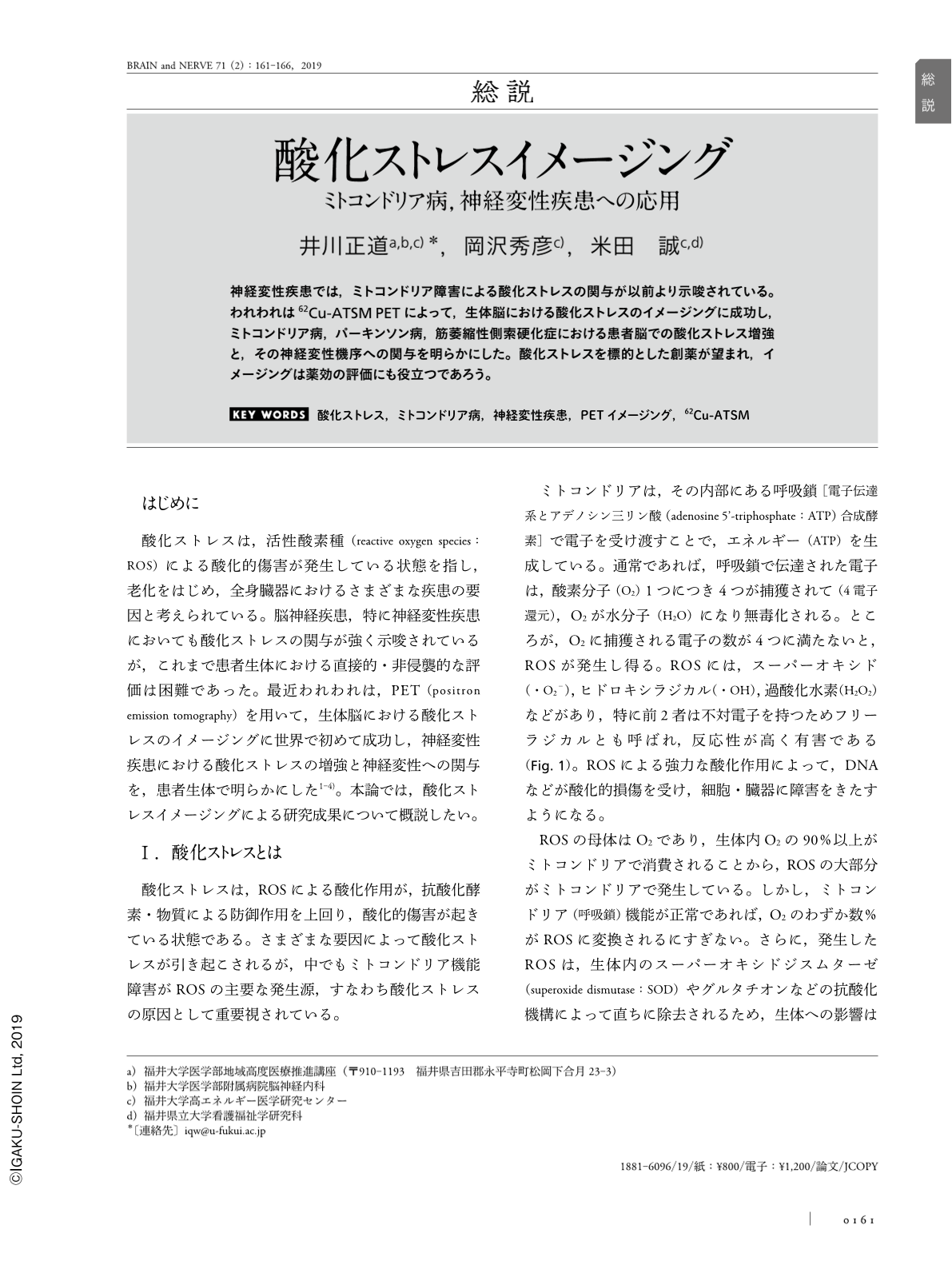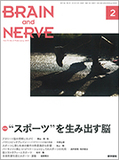Japanese
English
- 有料閲覧
- Abstract 文献概要
- 1ページ目 Look Inside
- 参考文献 Reference
神経変性疾患では,ミトコンドリア障害による酸化ストレスの関与が以前より示唆されている。われわれは62Cu-ATSM PETによって,生体脳における酸化ストレスのイメージングに成功し,ミトコンドリア病,パーキンソン病,筋萎縮性側索硬化症における患者脳での酸化ストレス増強と,その神経変性機序への関与を明らかにした。酸化ストレスを標的とした創薬が望まれ,イメージングは薬効の評価にも役立つであろう。
Abstract
Oxidative stress and mitochondrial dysfunction are assumed to be the pathogenic molecular mechanisms underlying various neurodegenerative diseases. We applied positron emission tomography (PET) with [62Cu] diacetyl-bis (N4-methylthiosemicarbazone) (62Cu-ATSM) to image cerebral oxidative stress based on mitochondrial dysfunction in living patients. In our previous study, we observed an increased retention of Cu-ATSM in in vitro cell lines with mitochondrial respiratory failure, suggesting that 62Cu-ATSM uptake can be a promising biomarker for evaluating oxidative stress in patients with mitochondrial or neurodegenerative diseases. PET imaging with 62Cu-ATSM successfully demonstrated the increased uptake in brain lesions of a patient with mitochondrial disease (MELAS), in the striatum of patients with Parkinson's disease, and in the motor cortex and motor-related cortices of patients with amyotrophic lateral sclerosis. The uptake for these disease-related brain regions strongly correlated with disease severity, indicating that oxidative stress based on mitochondrial dysfunction is associated with the neurodegenerative process in these diseases. 62Cu-ATSM PET imaging for oxidative stress has improved our insights into the pathological mechanisms of neurodegenerative diseases and may be a promising tool for monitoring further antioxidant and mitochondrial therapies.

Copyright © 2019, Igaku-Shoin Ltd. All rights reserved.


